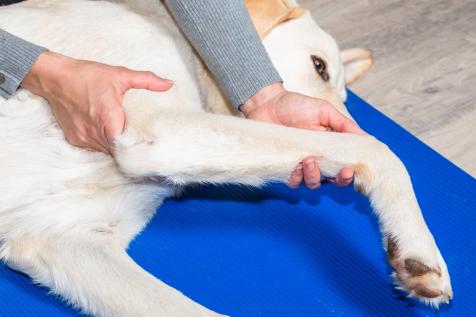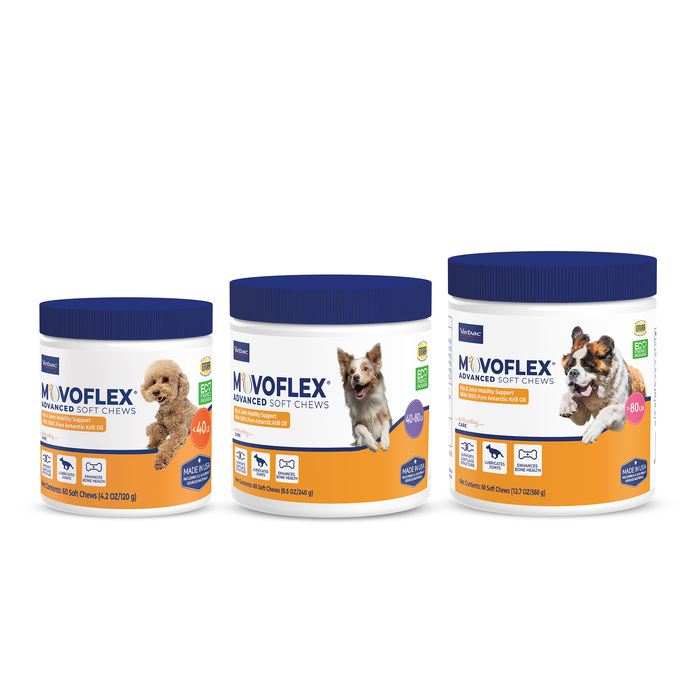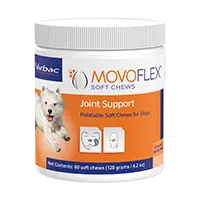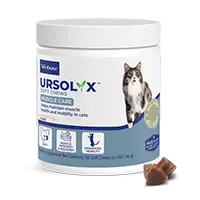Dog Mobility

A joint is formed when two bones are brought together and held in place by supporting tissue. Joints may have very little movement such as joints between the bones in the skull or they may have ranges of movement such as the shoulder and hip joints. Joints are designed to provide stability to the body during weight bearing and motion. Joints can be classified as:
- Fibrous joints (synarthroses)
- These joints have little motion. An example is the skull sutures.
- Cartilaginous joints (amphiarthroses)
- These joints have limited motion, permitting compression and stretching. An example is the joint formed between each vertebra in the spine.
- Synovial joints (diarthroses)
- These joints allow the greatest amount of movement. Examples include the stifle, carpal joints, elbows, and hip joints.
Synovial Joints
Synovial joints are the ones most likely subject to damage or pathology. Each synovial joint has a synovial membrane, joint capsule, synovial fluid, articular cartilage, subchondral bone, and a joint cavity. The synovial membrane is a highly vascular covering that is responsible for synovial fluid production. The chief function of the synovial fluid is lubrication, decreasing friction in the joint and decreasing wear and tear on the joint. The articular cartilage is a white smooth covering that lacks blood vessels, lymphatic vessels, and nerve endings. This protects the joint, but also delays the inflammatory repair process until deep lesions invade the subchondral bone.
Joint Disease
Joint disease is common in dogs. Osteoarthritis is a slowly progressive cartilage degeneration that is caused by trauma or microtrauma (abnormal wear). Risk factors include breed disposition[PT1], obesity, age, trauma, repetitive injury, and joint instability.
It is estimated that 20% of dogs over the age of two have clinical signs of osteoarthritis. That said, the older a dog is the more likely it is suffering from the disease. In fact, it is estimated that more than half of dogs over 7 years of age have osteoarthritis affecting them.
Clinical Signs
- Stiffness, lameness, or difficulty getting up
- Hesitation to climb stairs
- Reluctance to play, run, or jump
- Weight gain
- Pain when petted or touched
- Difficult or unusual posture when defecting or urinating
- Loss of muscle mass over the limbs and spine
Differential Diagnosis
Although osteoarthritis or degenerative joint disease is the most common joint disease in dogs, other causes of joint disease include infectious disease, immune mediated disease, and neoplasia. History and clinical examination can localize pain if present and help determine the cause. Radiographs are beneficial but it is important to note that radiographic signs do not always correlate with clinical signs in an individual dog.
Pre-emptive Care
The best treatment for osteoarthritis is prevention. Weight management is a key component of prevention and one of the factors that can be controlled. Early recognition and prompt intervention will diminish damage and increase comfort level. Nutritional support should be considered to help a dog maintain an active lifestyle.








